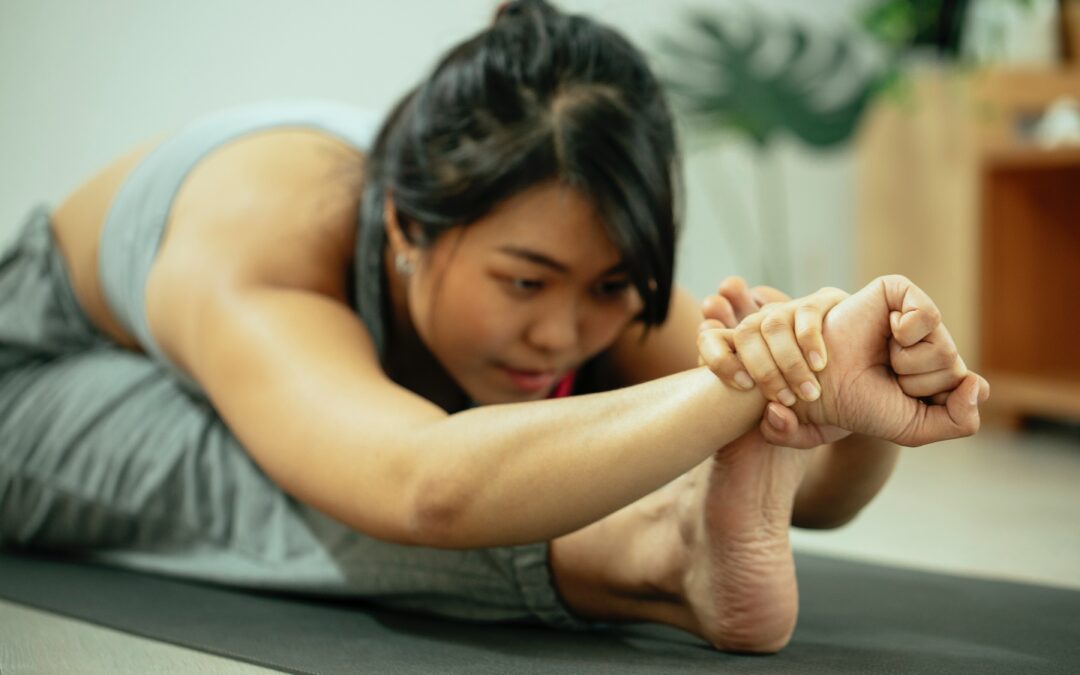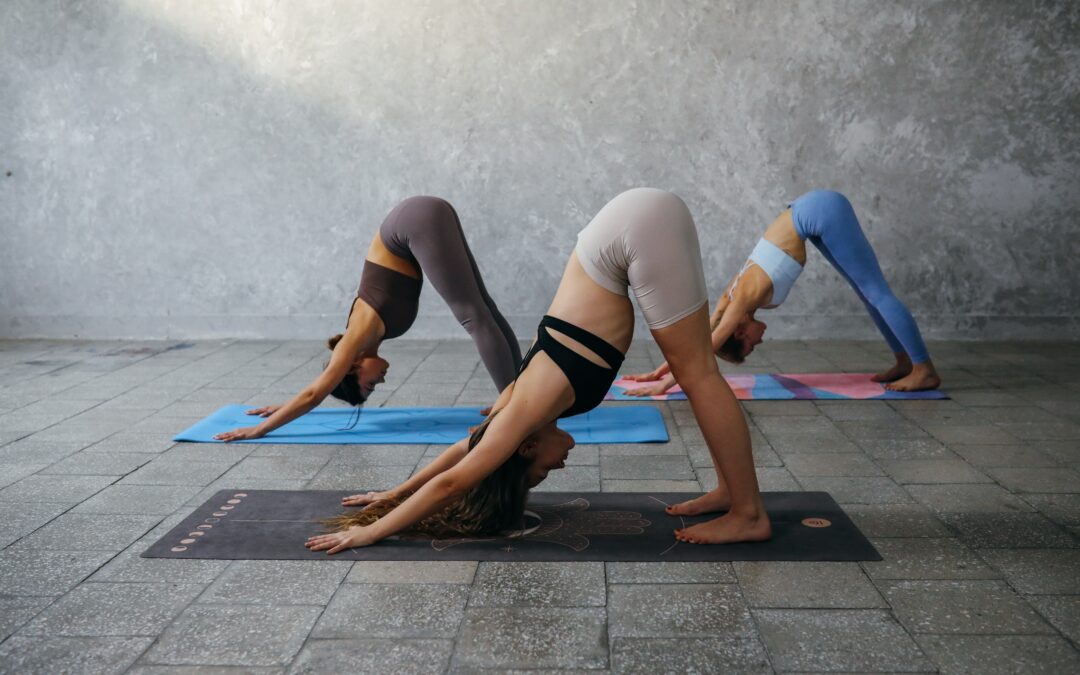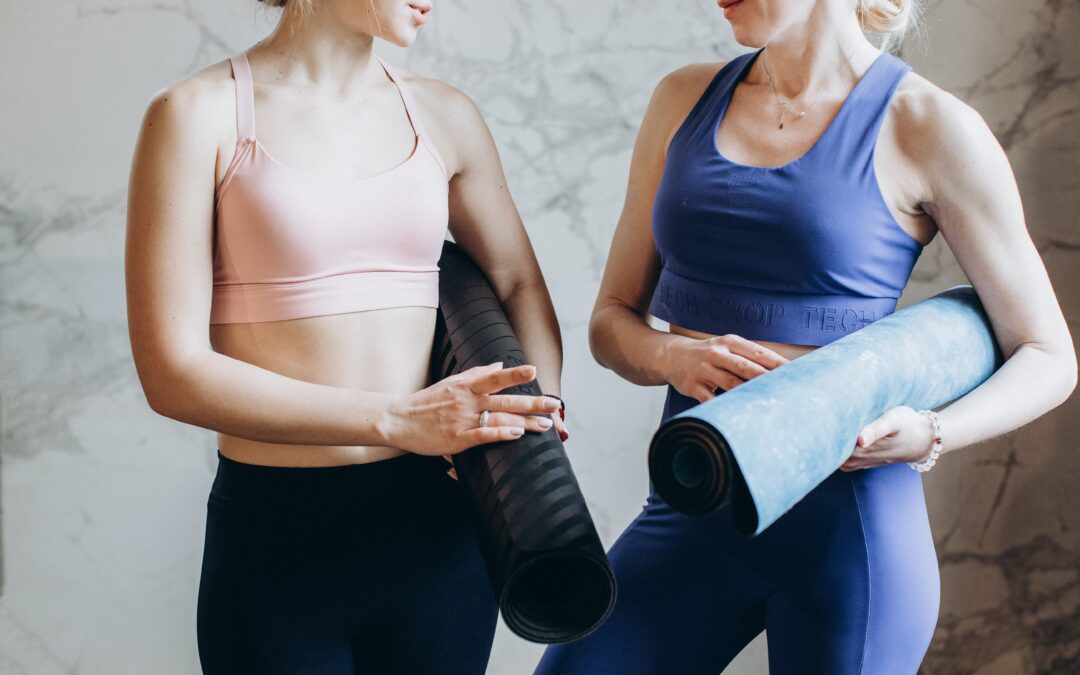After reading “What are the possible benefits of yoga?”, do you feel motivated to start practicing? Since the names of the yoga classes may sound confusing, we have prepared a special blog for you! In this blog, you will read about the goals of Ashtanga, Vinyasa, and Hatha yoga classes and who they are for. Moreover, we will describe the Trueyogi approach and the unique features of the Trueyogi classes in the end!
1. Vinyasa Yoga
Vinyasa can be translated as “to place in a special way” (Rea, 2012). In a yoga class, one object of this special way of placement can be the yoga poses: choosing and sequencing poseshttp://Retrieved January 25, 2023, from https://www.yogajournal.com/yoga-101/types-of-yoga/vinyasa-yoga/consciousness-in-motion/ for creating the desired effect of a yoga class. This desired effect may be purifying the mind and body, opening the heart space, developing core power, etc.… Moreover, transitions between poses also tend to be more creative and unique. Another object of the placement may be considered as the body within a pose or in a breath. Whether it is the special class structure or special way of placing the body in yoga poses, the link between breath and yoga poses is indisputable in a Vinyasa Class. Every movement is linked to the appropriate breath, and these classes are expected to be more dynamic.
You can consider joining Vinyasa classes if you prefer:
- A dynamic class where the focus is on the breath, movement, and flow
- Building fluidity inside out rather than working on steadiness
- A class that will increase the heat, and energize the whole body
2. Ashtanga Yoga
One of the most influential students of the father of modern yoga T. Krishnamacharya was Sri K. Pattabhi Jois. 6 Ashtanga series were developed by Jois and they became widely popular among Western yogis. These series have the same name as the ancient yoga system “Ashtanga Yoga” suggested by a sage called Patanjali in 100 BC.
In the Ashtanga Yoga practice developed by Jois, students start with the Primary Series. They continue practicing the same series until they master all the yoga poses within it. Afterwards, they can move forward to the upcoming one. Ashtanga series are also Vinyasa based (Pizer, 2020). Although the series continues in a flow, the duration spent in each pose is likely to be more than a Vinyasa Class. While the duration of a pose in a Vinyasa Class can change between one or half-breath cycle to 5 breaths, in the Ashtanga class most of the time it is 5 breaths -excluding the Sun Salutations and the vinyasas in between poses (Four-Limbed Staff Pose, Upward Facing Dog, Downward Facing Dog)-.
In this practice, the teacher-student relationship tends to be more traditional. Teachers fulfill their purpose by being a guide to their students. They make adjustments in the classes, inform the students about their progress, and decide when it is appropriate for them to move forward.
You may choose Ashtanga Classes if you prefer:
- A dedicated practice for mastering the yoga poses
- Receiving guidance regularly
- To start yoga with in-person classes rather than home practice -of course later on you can practice Ashtanga at home!-
- Merging fluidity with steadiness, and stability
3. Hatha Yoga
As Ashtanga Yoga has two different meanings, Hatha Yoga is also referred to as the name of a yoga system. You can check out our blog post “What is Hatha Yoga?” for detailed information.
In a Hatha Yoga class, a more structured sequence awaits the students. One should always bear in mind that according to different traditions, this structure may show differences. While one tradition uses a sequence starting from inversions to standing poses, other traditions can do the opposite. In any case, a Hatha Yoga class is likely to have poses from almost all pose groups to leave the body in a balanced state.
Hatha Yoga class can be challenging to some due to longer holds in every pose which can change between 5 to 7 breath cycles.
In sum, Hatha Yoga classes are for anyone who would like to
- Build strong foundations for their practice
- Work on developing perseverance
- Move at a slower pace, explore finding stillness in each pose
- Devote more time to understanding each pose
Are you wondering about the logic of passive yoga classes like Yin and Restorative compared to Hatha and Vinyasa classes? You can check out (Aylward, 2016)
4. Trueyogi Approach
Trueyogi yoga classes are also Vinyasa based, but with a distinctive feature. Our classes are meticulously designed with many different variations to incorporate possible individual differences of users. The app starts with a physical evaluation to learn about the user’s flexibility, strength, and balance. Mental and emotional evaluations of the users are the other determinants in the process. According to the outcomes of physical discovery, and mental/emotional state, AI generates a unique flow that will contribute to the physical progress and mental wellbeing of the users.
After these evaluations, users can either continue with recommended classes or choose from different sets of classes. Whichever set they choose, users are provided with the personalized flow generated uniquely for them.
In the App, users can find:
- Yoga for Body classes with physical goals: Healthy Posture, Endurance, Fat Burn, Metabolism Boost, Immunity Boost, Workout Recovery, Flexibility, and Core Power.
- Yoga for Mood classes that bring instant relief: Relaxation, Emotional Stability, Reduce Stress & Anxiety, Concentration Boost, Confidence Boost, Energy Boost, Self Connection, and Optimism & Positivity.
- Yoga Series to work with intentions: Willpower – for developing determination and solidity, Passion – for improving flexibility and acceptance, Self-image – for developing self-esteem and courage for change, Wisdom – for revealing inner joy and compassion, Self-expression – for unlocking creativity, Mental Fitness – for a focused and productive mind, Vitality – for expanding awareness and awakening liveliness
By providing real personalization, Trueyogi opens a space for every yogi to practice efficiently. Users practice with yoga flows that will help them not only to master yoga poses but also to come into a balanced mental state. Moreover, with the progress tracker, yogis track how far they have come in the practice! Feeling inspired to meet unique flows designed just for you? Download Trueyogi now!
References
Aylward, M. (2016, January 28). Different Yoga Styles: Hatha Vinyasa Yin Restorative – Which One Should You Practice?. YouTube. Retrieved January 25, 2023, from Different Yoga Styles: Hatha Vinyasa Yin Restorative – Which One Should You Practice?
Pizer, A. (2020, August 22). Ashtanga Yoga and Founder Pattabhi Jois. Verywell Fit. Retrieved January 25, 2023, from https://www.verywellfit.com/ashtanga-yoga-a2-3566698
Rea, S. (2012, November 13). Consciousness in motion: Vinyasa. Yoga Journal. Retrieved January 25, 2023, from https://www.yogajournal.com/yoga-101/types-of-yoga/vinyasa-yoga/consciousness-in-motion/


